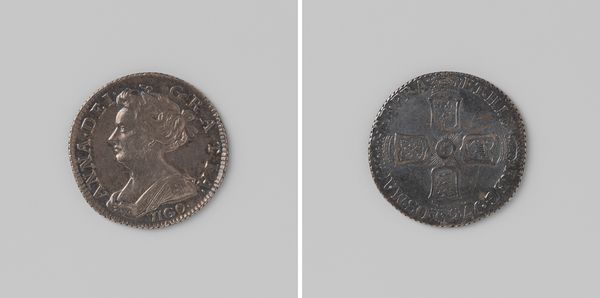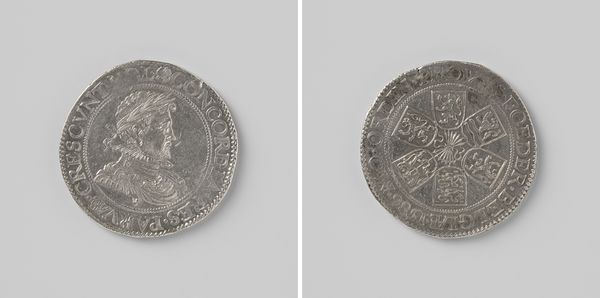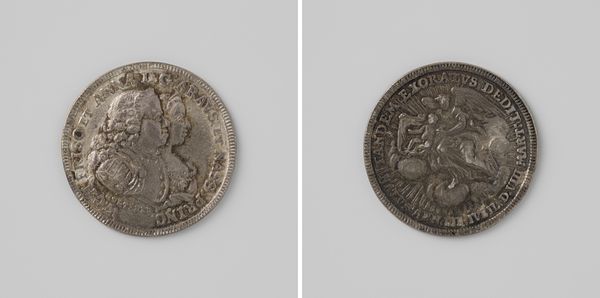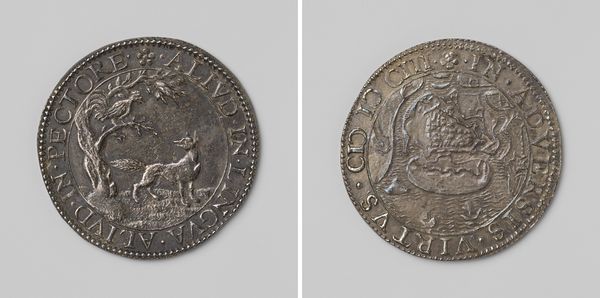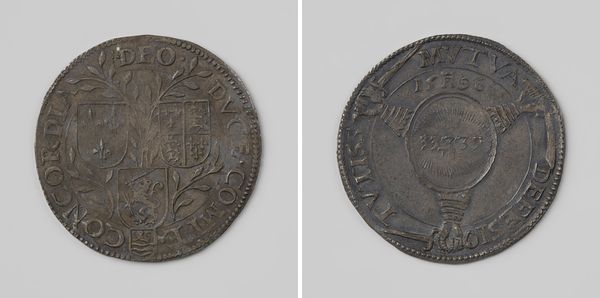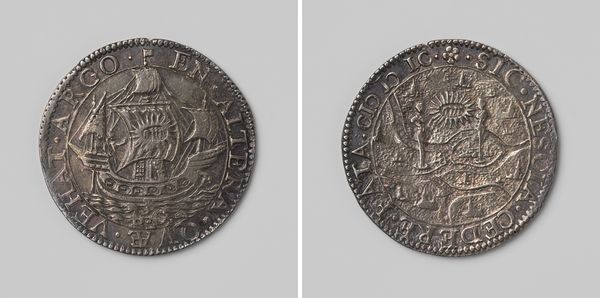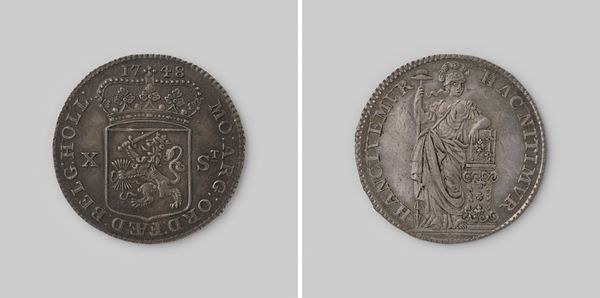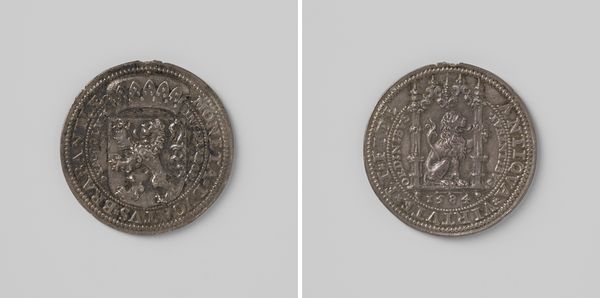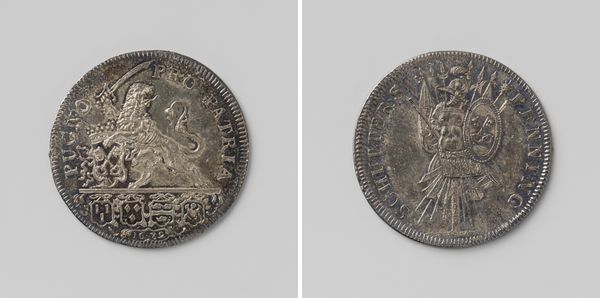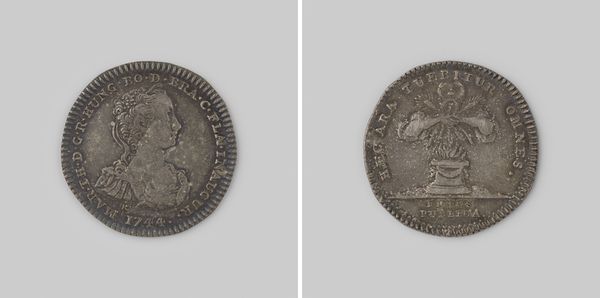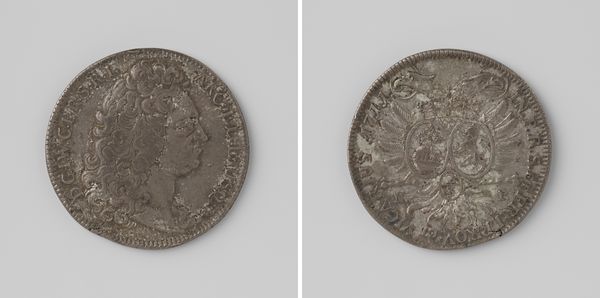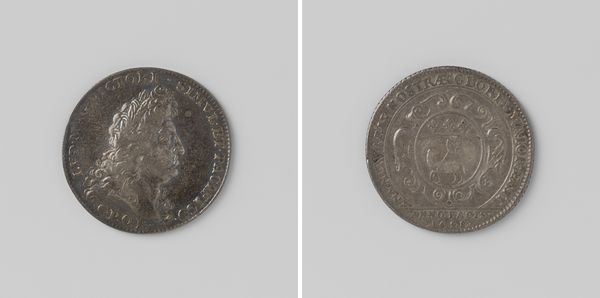
metal, embossing, sculpture
#
neoclassicism
#
metal
#
sculpture
#
embossing
#
geometric
#
sculpture
#
history-painting
Dimensions: diameter 4.1 cm, weight 6.53 gr
Copyright: Rijks Museum: Open Domain
Curator: This is the Grand Cross of the Order of the Union, dating from 1811. It once belonged to I.J.A. Gogel. The piece is metal and features delicate embossing. Editor: It has a very weathered, almost ghostly look about it, doesn’t it? The design is strikingly simple – a regal lion emerging from what looks like turbulent water. Curator: Indeed. The lion, of course, is a symbol of strength, courage, and royalty, heavily laden with connotations that span cultures. Notice how it emerges from the water, signifying overcoming obstacles, a theme often woven into history-painting. It can represent a rise from hardship, doesn’t it? Editor: Exactly. This lion wears a crown, and I imagine this was displayed with pride, likely at a time of immense upheaval. What does the Order of the Union itself tell us? Curator: The Order was created during the brief period when the Netherlands was annexed by France under Napoleon. It replaced the Order of the Dutch Lion, indicating a shift in political power and loyalty. Think of the cultural memory encoded in these symbols. To the Dutch, the lion held centuries of meaning, disrupted and redirected. Editor: And the choice of metal is no accident, is it? There’s an undeniable permanence and solidity implied, even if its sheen is faded now. Its creation tells us of how such emblems attempted to legitimize power, while the choice to wear it announces one’s allegiance to new political order. But does the imagery fully succeed in supplanting prior emblems, can one actually erase centuries of symbolism at such scale? Curator: An interesting point. Objects like this were deployed to shape public perception, but you’re right to ask about its success. This object’s existence demonstrates not just power but the *attempt* to assert it. History always simmers beneath the surface. The subtle details hint to that conflict; even the motto surrounding the central emblem is meaningful to those times. Editor: Considering it in this light is useful. What might seem just a pretty heraldic emblem holds a fascinating story about identity, allegiance, and imposed change. Curator: It’s a testament to how objects can be more than just decorations. They're charged carriers of historical narratives. Editor: Leaving us to wonder: What kind of power dynamic will future archaeologists glean from our emblems?
Comments
No comments
Be the first to comment and join the conversation on the ultimate creative platform.
